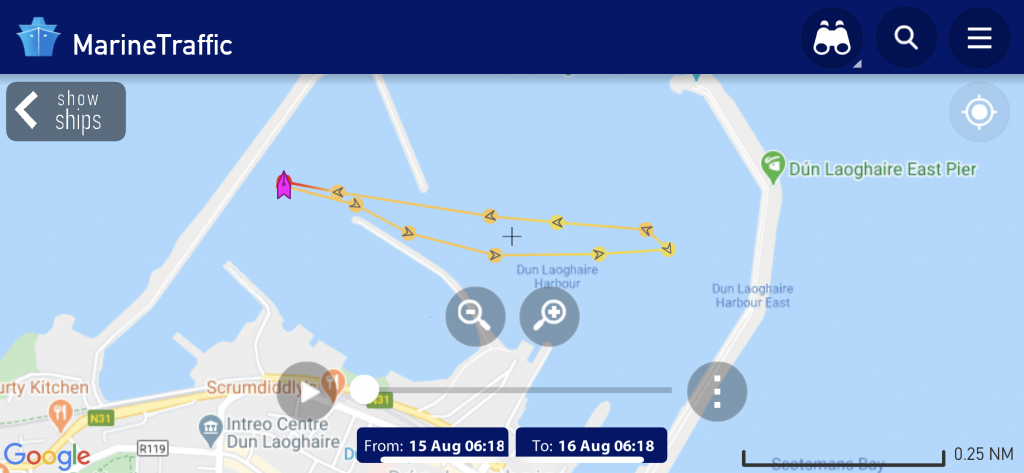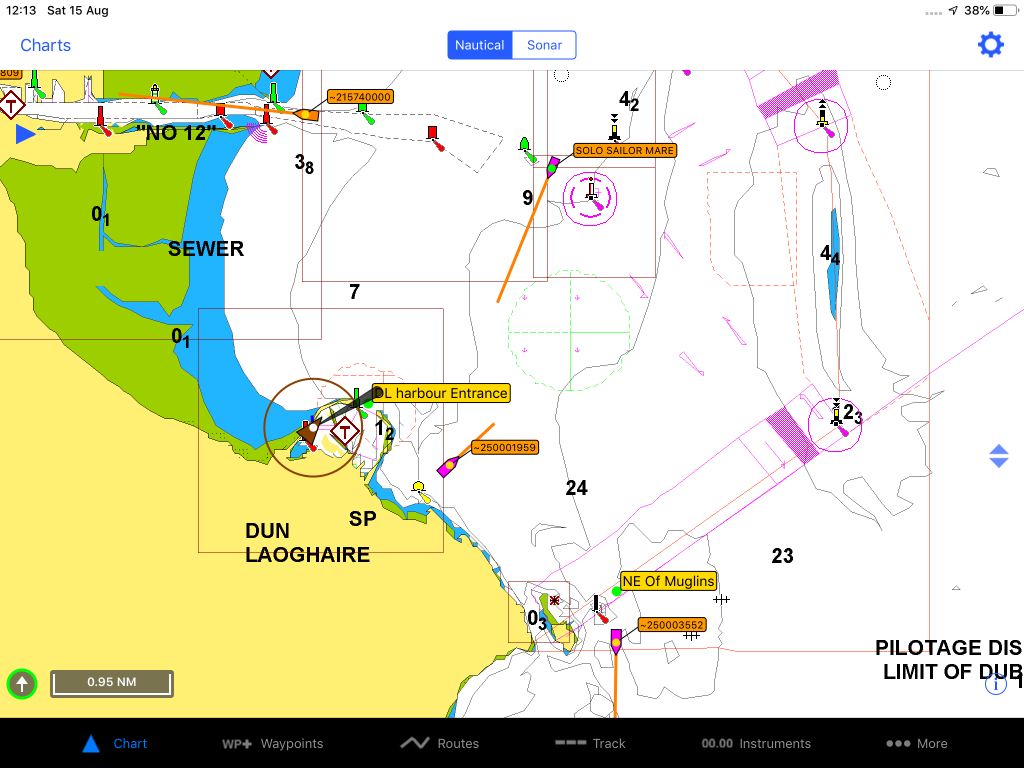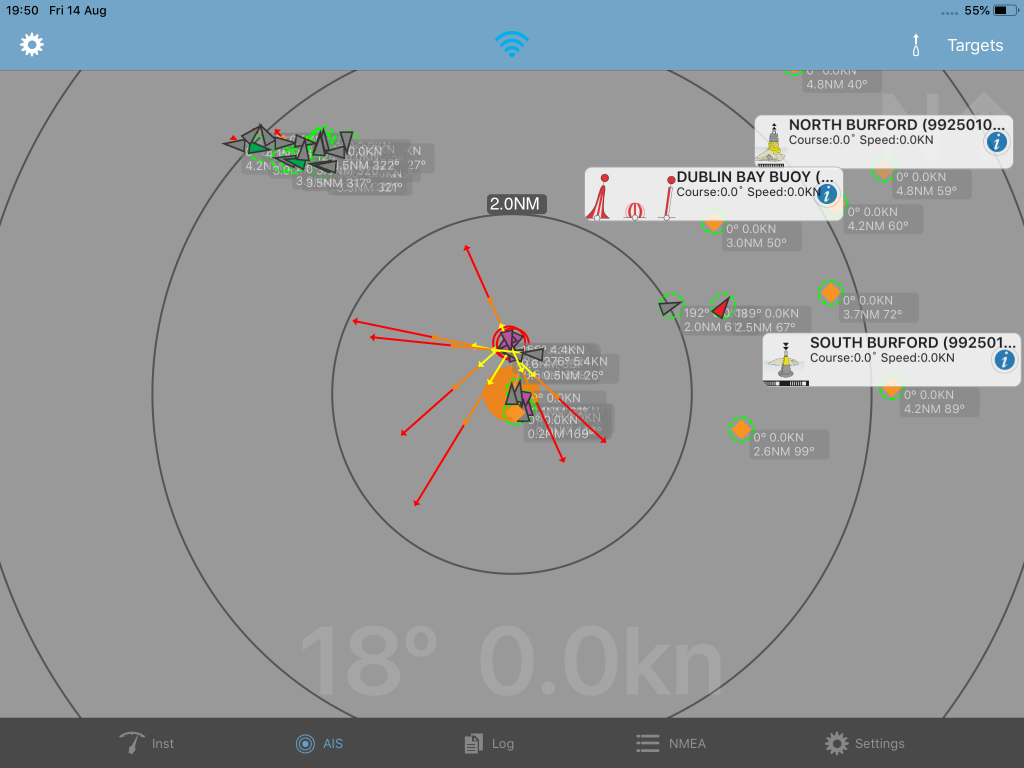I spent part of Friday, and most of Saturday working on getting the AIS unit integrated into Blue Opal’s network, measuring the output of the engine tachometer, and generally fiddling with the electrical wiring locker (tidying it mostly). The end result is that the locker is tidier, the B600s is mounted properly in the locker, wires have been clipped to various bulkheads with some P-clips, labels are now applied to various fuses and cables, and I have some saved waveforms from the tachometer. I also have a list of parts to buy and other maintenance to do.
I was meant to be on the slip on Saturday to change the anode, but managed to swap for Sunday with another boat so that I could have a larger tide swing (and a higher tide to get on the slip with). Thus Saturday was spent on board tidying up from Friday’s work in the wiring locker, discovering magic tricks like a cable that was carrying 4.5V relative to the boat’s negative/ground point for the batteries (this one is a doozy).
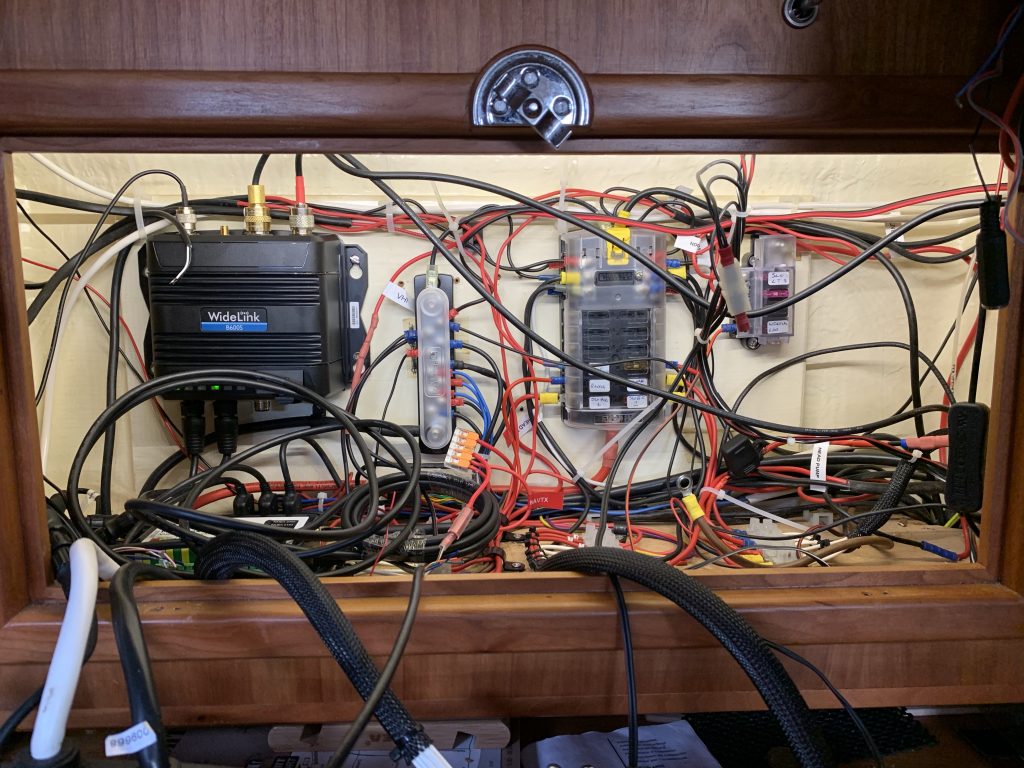
The state at the end of Friday 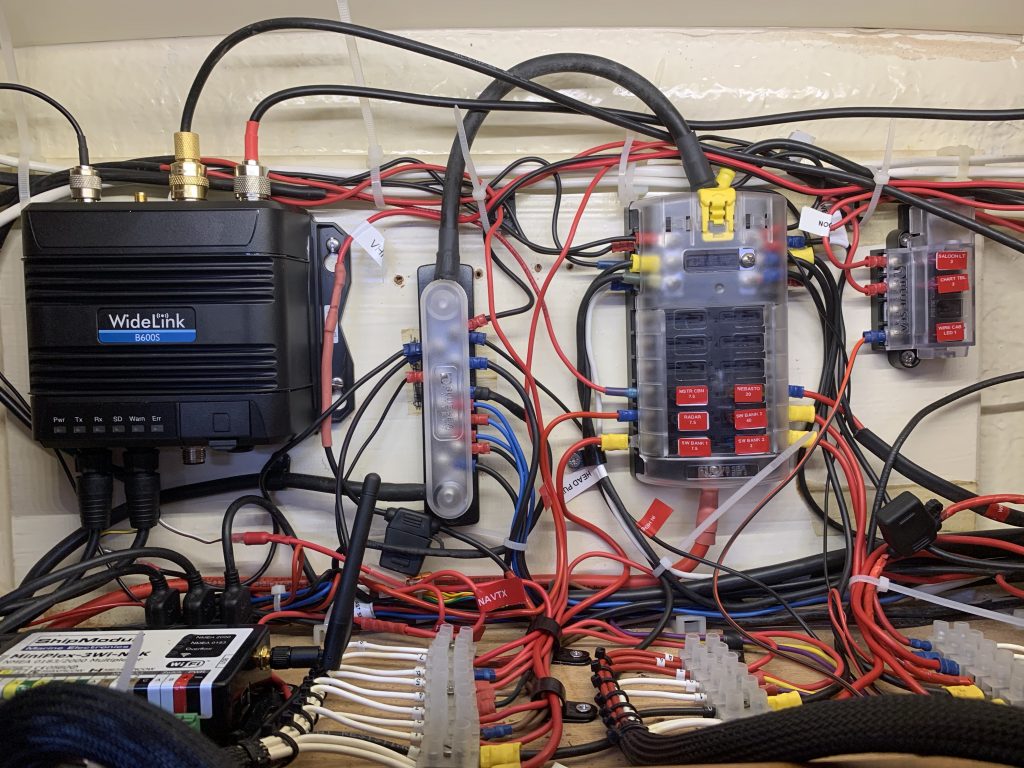
The state at the end of Saturday 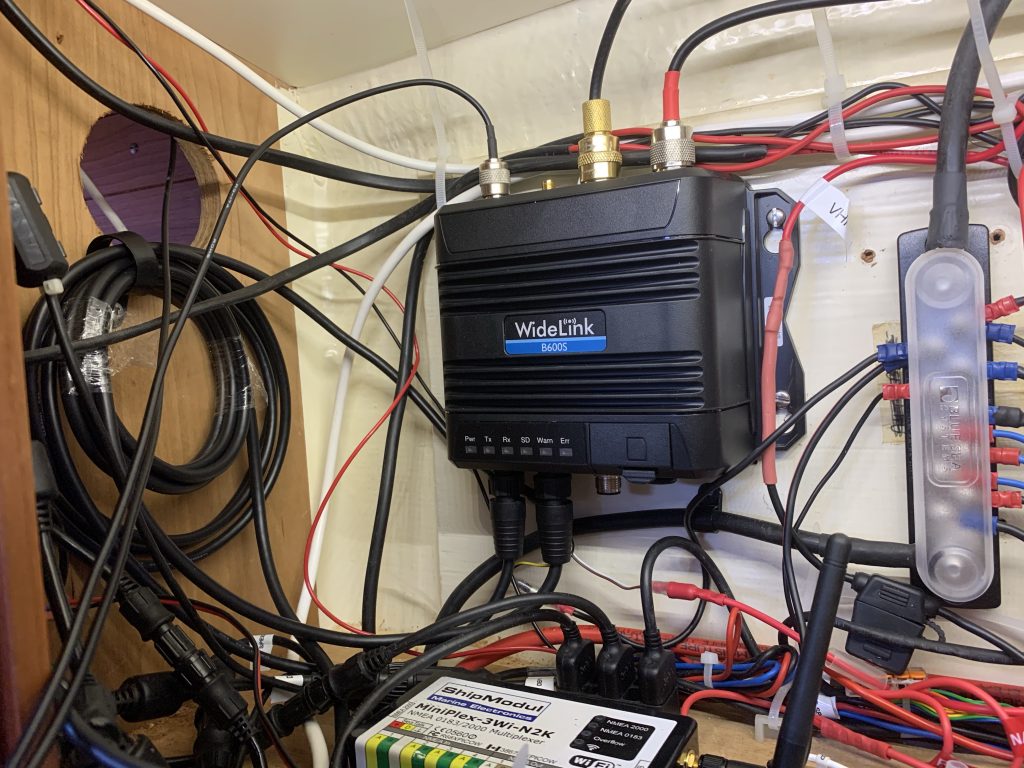
AIS wiring clipped in loops 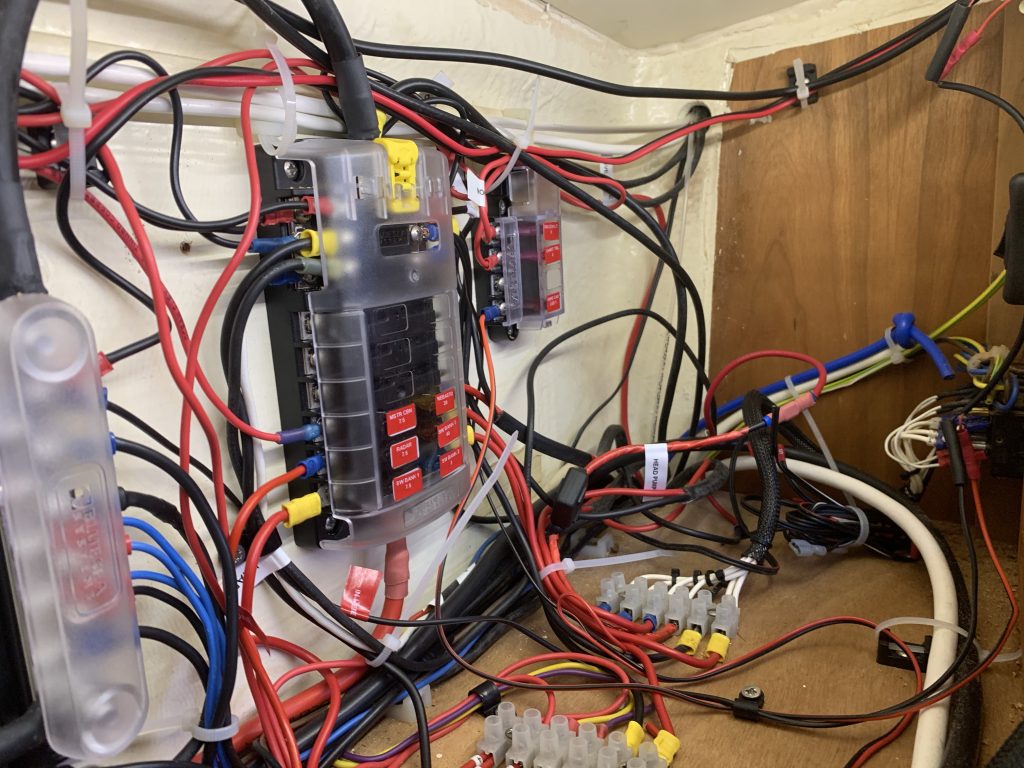
Don’t look down that end!
I spent a bit of time adding more labels to the cabling, and replaced my hand-written fuse labels with nicer (but crooked) printed ones. I’ve got a Dymo D1 with the durable tapes, and it’s working pretty well. I also uprated the join between the two negative bus bars, as I had that length laying around – there’re actually two cables running back to the batteries from the fuse block/bus bars, so I shouldn’t have power sag issues because of them at least (last year’s upgrade, doubled the square area of the negative cables to accommodate the new things like waste tank pump).
There are a few cases where the fuses are too large, so I’ve made notes about what fuses I need to buy – Blue Opal is now standardised on ATC fuses, with most of them being the fancy Blue Sea ones with LEDs that come on when they blow.
The in-locker light strip is now held up better with some double sided tape, as is the switch for that strip – previously it was just dangling, and pulling the strip away from the wood (the glue wasn’t holding against the weight). More wiring is held down with P-clips, and so things are generally neater.
With the labeling done, and everything connected up, I took Blue Opal for a quick jaunt around the harbour to make sure that the AIS was tracked properly by sites like MarineTraffic and VesselFinder.
With the AIS completed, I looked for other things to tidy up wiring-wise. The old positive bus cable was still in the locker, and when I clipped to it with the voltmeter (having forgotten what the cable was for, and not seeing any sign of a brown cable coming up in the battery locker), I was getting some really weird readings – 4.5V potential compared to the negative terminal of the battery bank. There’s no way anything on Blue Opal produces 4.5V. To be sure, I used a second multimeter, and it too confirmed that the potential was 4.5V. Chatted with Dad about it, and we couldn’t come up with any way this was possible, so I set about tracing the cable. I proved that it went behind the chart table, down under the starboard berth, under the cabin sole, across the top of the bilge, and never came up in the bundle of cables that go to the battery switches.
Last year, I was clever enough to cut the floor panel of the battery locker in half, so that the battery didn’t have to be removed to get access to the wiring bundle coming up from by the bilge. This paid off, because I was able to lift it out, and see the other end of the cable just sitting in some salty water (almost a brine). Clipped that end on to the multimeter, and confirmed again that it was at 4.5V compared to the negative terminal. Lopped off the end at the wiring locker, and hauled it all out – and as I did so, the potential changed; it went down, and down, and down.
With the cable fully extracted, I looked at the multimeter again, and the voltage was fluctuating. It’s an utter magic trick, I swear.
Note that the two ends of the cable are in frame; there’s nothing putting voltage on to the cable, yet the voltmeter is registering a cycling voltage. Very, very strange.
As noted, I need a few more fuses, and I think I’ll get some SO239 to PL259 right-angle adapters, so that the antenna and radio cables come out of the B600s horizontally – that should relieve the strain on them. Also need to get another pair of the Shakespeare crimping PL259s so I have spares.
Found the paperwork for the boiler, it’s a Nautic, so if I need to replace it, I at least know who to talk to.
